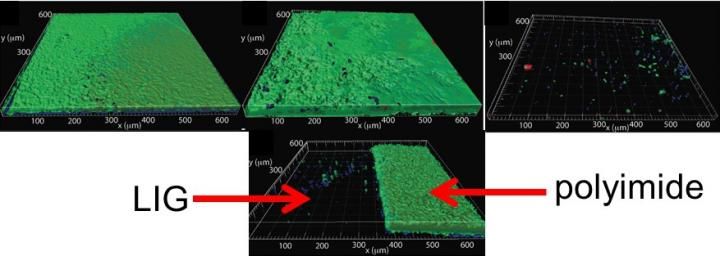Process in big-screen plasma TVs can produce ultra-clean fuel
The process that lights up big-screen plasma TV displays is getting a new life in producing ultra-clean fuels, according to a report at the 239th National Meeting of the American Chemical Society (ACS). It described a small, low-tech, inexpensive device called a GlidArc reactor that uses electrically-charged clouds of gas called "plasmas" to produce in three steps super-clean fuels from waste materials. One is a diesel fuel that releases 10 times less air pollution than its notoriously sooty, smelly conventional counterpart.
"Low-tech and low cost are the guiding principles behind the GlidArc reactors," said Albin Czernichowski, Ph.D., who presented the report. "Almost all the parts could be bought at your local hardware or home supply store. We use common 'plumber' piping and connections, for instance, and ordinary home insulation. Instead of sophisticated ceramics, we use the kind of heat-resistant concrete that might go into a home fireplace. You could build one in a few days for about $10,000."
Czernichowski noted that the reactors, about the size of a refrigerator, are custom designed to clean dirty gases produced by a low-tech gasification of locally available wastes, biomass, or other resources to produce clean mix of carbon monoxide and hydrogen gas to synthesize biofuels. Corn farming regions, for instance, could use corn stover (leaves and stalks left in the field after harvest) as the raw material. In urban areas, waste cooking oil from restaurants could be the raw material. In regions that produce biodiesel fuel, glycerol could be converted into clean fuels. Czernichowski pointed out production of biofuels results in huge amounts of glycerol byproduct — 200 pounds for every 2,000 pounds of biodiesel. The glycerol is expensive to refine to the high purity needed for commercial use. GlidArc reactors could transform glycerol into a clean synthesis gas (the carbon monoxide and hydrogen) for production of fuels, he said.
A professor with the University of Orleans, France, Czernichowski realized in 1986 that a branch of science called non-equilibrium cold plasma could be used to produce new transportation fuels that are less polluting than their conventional counterparts as they lack harmful substances found in traditional transportation fuels.
The technology gets it name from the use of a gliding arc of electricity to that produces a plasma inside the reactor. The plasma allows chemical reactions to occur at dramatically reduced temperatures. Gases from heating (pyrolyse or gasification) biomass or glycerol, for instance, become clean and chemically active, and this allows for the transformation of those materials into clean fuels.
"The main advantage of such biobased fuels that the GlidArc Technology can create is that they constitute "drop-in replacements" for fossil Diesel oil, gasoline or kerosene, and no modifications are needed in engines, vehicles and distribution systems," Czernichowski said. "The biofuels can also be used as additives to various types of engine fuels to improve certain fuel properties. Another important advantage, of course, is their much lower toxicity for mankind and the environment compared to conventional fuels."
Most read news
Other news from the department science
These products might interest you

Berghof Reaktortechnologie - Hoch- und Niederdruckreaktoren, Druckbehälter und metallfreie Reaktoren by Berghof
Safe high- and low-pressure systems for aggressive media
Corrosion-resistant reactors with PTFE lining - individually configurable

BUCHI MINICLAVE by C3 Prozess- und Analysentechnik
Flexible small reactor systems - acid resistance, visual control and individual customization options for a wide range of applications!

PhotoSyn™ by Uniqsis
Experience the future of photochemistry
Flow reactor with user-friendly control for higher yields and selectivity

Get the chemical industry in your inbox
By submitting this form you agree that LUMITOS AG will send you the newsletter(s) selected above by email. Your data will not be passed on to third parties. Your data will be stored and processed in accordance with our data protection regulations. LUMITOS may contact you by email for the purpose of advertising or market and opinion surveys. You can revoke your consent at any time without giving reasons to LUMITOS AG, Ernst-Augustin-Str. 2, 12489 Berlin, Germany or by e-mail at revoke@lumitos.com with effect for the future. In addition, each email contains a link to unsubscribe from the corresponding newsletter.





























































